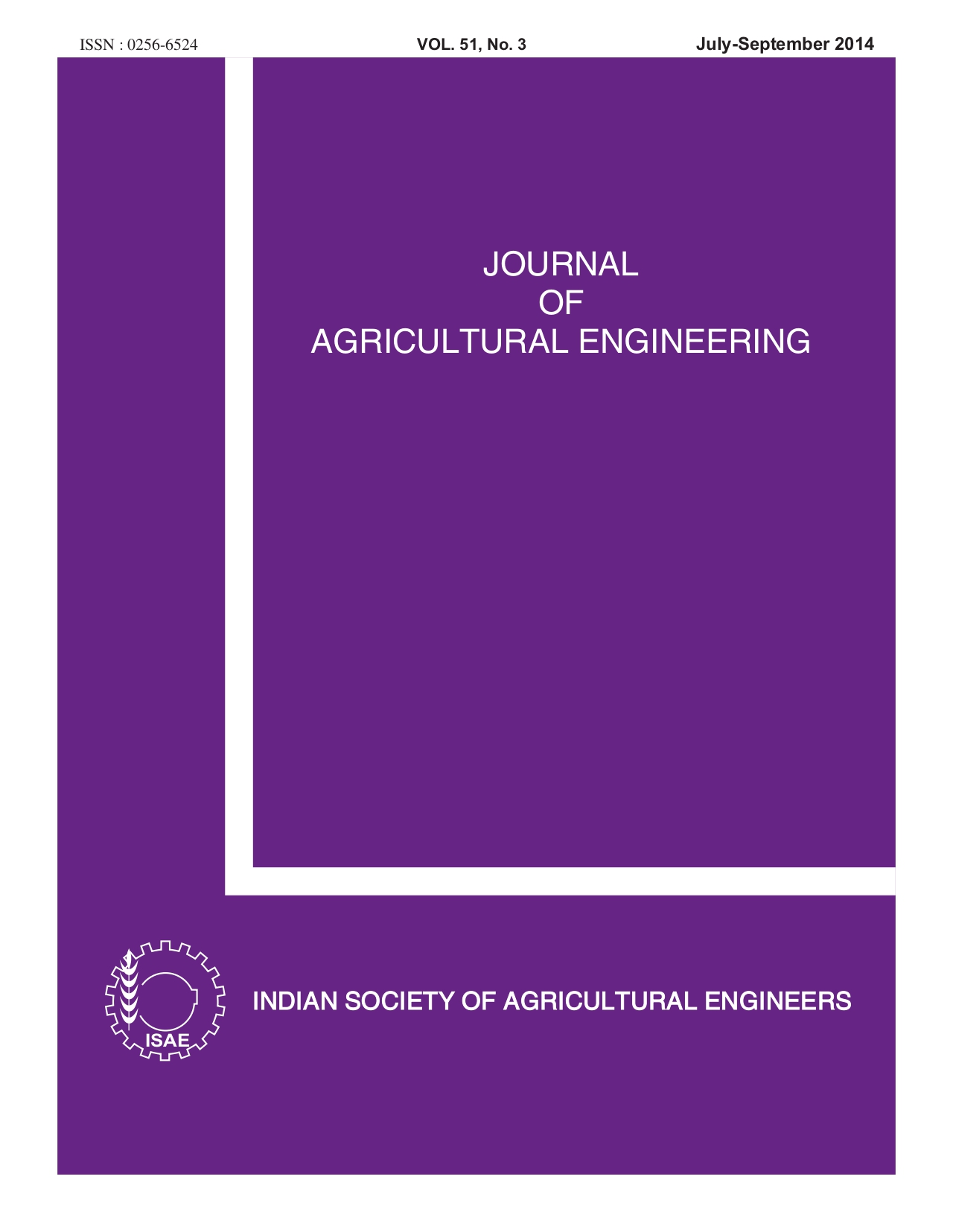Effectiveness of Horizontal Filter for Artificial Groundwater Recharge Structure
DOI:
https://doi.org/10.52151/jae2014513.1556Keywords:
Recharge structure, recharge filter, horizontal filterAbstract
Performance of two new designs of recharge filters involving modified flow pattern of recharging water from vertical to horizontal was evaluated at CSSRI, Karnal. Inflow water of 500, 1000, 1500, and 3000 ppm sediment load were passed through such horizontal filters and performance was assessed in form of removal efficiency (RE) and filtration rates. In the first design of horizontal filter (HF1), layers of varying thickness and densities of two biological materials (coir and rice husk) alone and in combination with 20 or 25 cm thick coarse sand layers were utilized, and performance was evaluated at varying sediment loads for different combinations in comparison to conventional vertical filters. In the second design of horizontal filter (HF2), layers of synthetic (geo-textile and plastic net) and jute cloth (jute bag) and newar (a densely knitted cotton strip used in cot making) material were wrapped around perforated portion of recharge well pipe in different numbers and evaluated at different sediment loads. Results indicated that 25 cm thick sand layer recorded highest RE of more than 90% at all sediment loads in HF1. Coir and rice husk alone (50 cm thick layer of 92.6 kg.m-3 and 125 kg.m-3 density, respectively) recorded RE of 85 per cent. At 3000 ppm sediment load, vertical filter clogged within 1 h, while clogging in HF1 consisting coir or rice husk and sand layer occurred after 8-9 h, indicating advantage of the horizontal filter. In HF2, geotextile and newar recorded RE more than 90%, but the filtration rate was substantially low. The results revealed that performance of recharge filter can be improved by arranging filter materials horizontally, followed by a sand layer to inflow water at the end. However, larger surface area will be required in horizontal filters as compared to vertical filters to obtain desired filtration rate.
References
Kaledhonkar M J; Singh O P; Ambast S K; Tyagi N K; Tyagi K C. 2003. Artificial groundwater recharge through recharge tubewells: a case study. Institution of Engineers (I) J.–AG , 84, 28-32.
Kamra S K; Anchal V; Aswal S; Lal K. 2006. Ground Water recharge through savity wills in saline groundwater regions. In : Rechargeable Systems for Protecting and Enhancing Groundwater Resources, Proc. 5th International Symposium on Management of Aquifier Recharge, Berlin, June 11-16, 2005, IHP-VI Series on Groundwater No. 13, 699-704.
Kamra S K; Kumar Satyendra; Kaledhonkar M J; Yadav R K; Singh S K; Ram Ajore; Singh G. 2010 . FPARP on Enhancing Groundwater Recharge and Water Productivity in North West India. Extension Brochure, Central Soil Salinity Research institute, Karnal, India, pp: 6.
Kamra S K; Sharma D K. 2011. Groundwater recharge structures for small farmers in alluvial regions. Technical Paper, 3rd Ground Water Congress, organized by Central Ground Water Board, Ministry of Water Resources, Govt. of India at New Delhi, March 22- 23, 168- 174.
Kumar Satyendra; Kamra S K; Yadav R K; Sharma J P. 2012. Evaluation of sand-based stormwater filtration system for groundwater recharge wells. Curr. Sci., 103( 4), 395-404.
Taneja D S; Khepar S D. 1996. Effect of artificial groundwater recharge on aquifer parameters using cavity well. Ground Water, 34 (2), 335-340.














